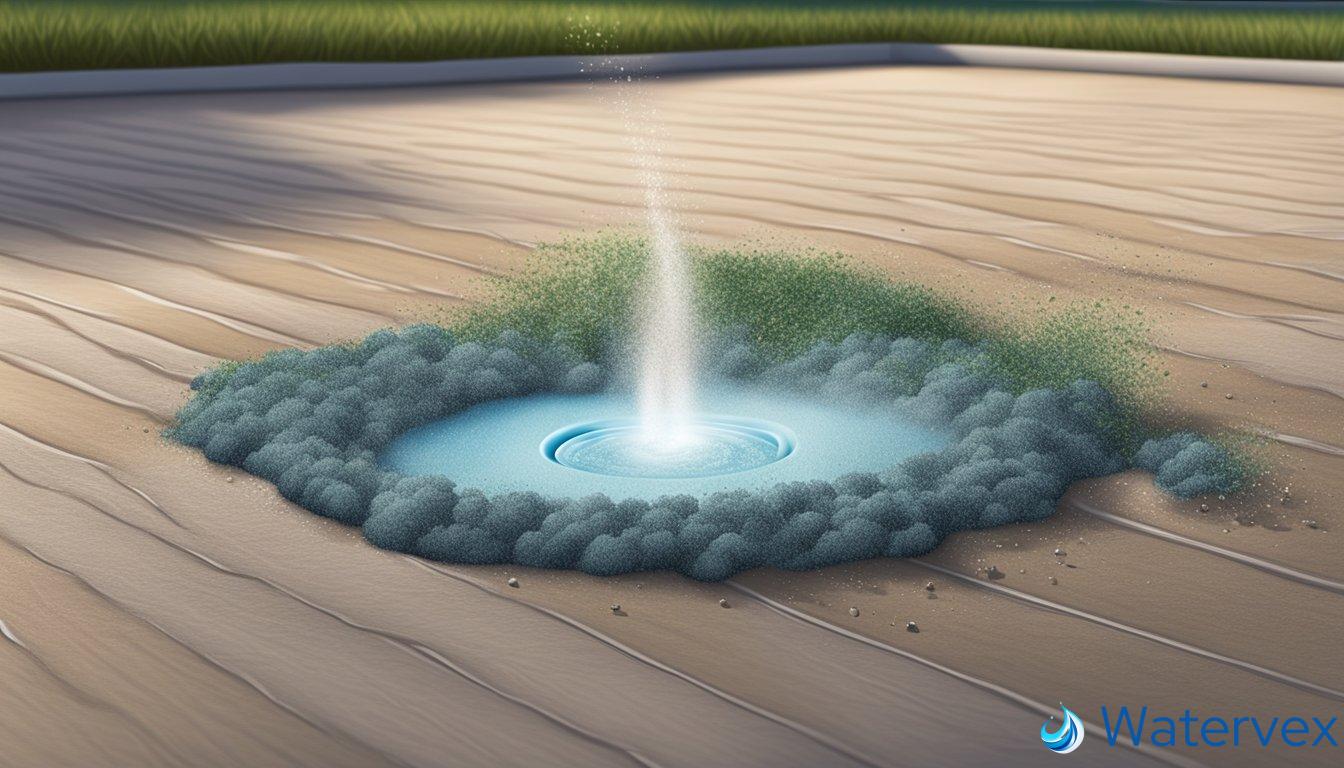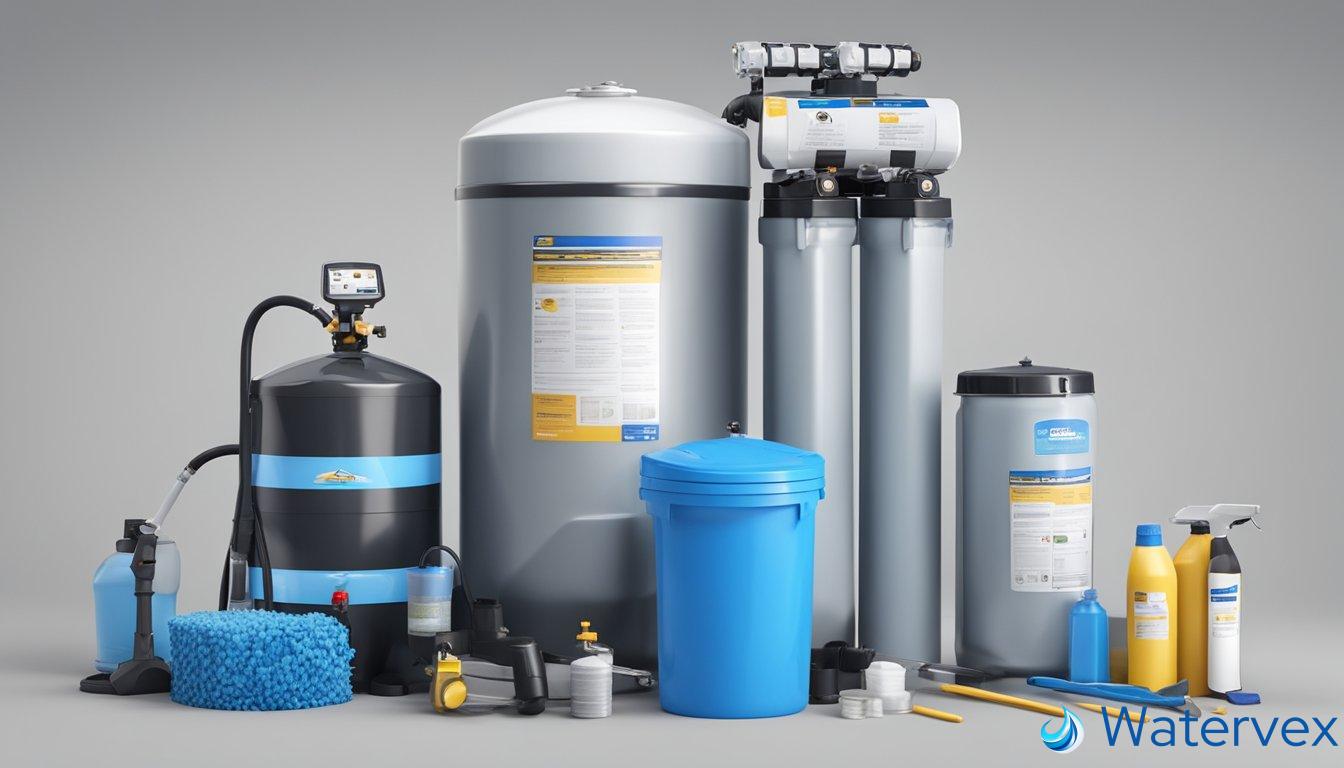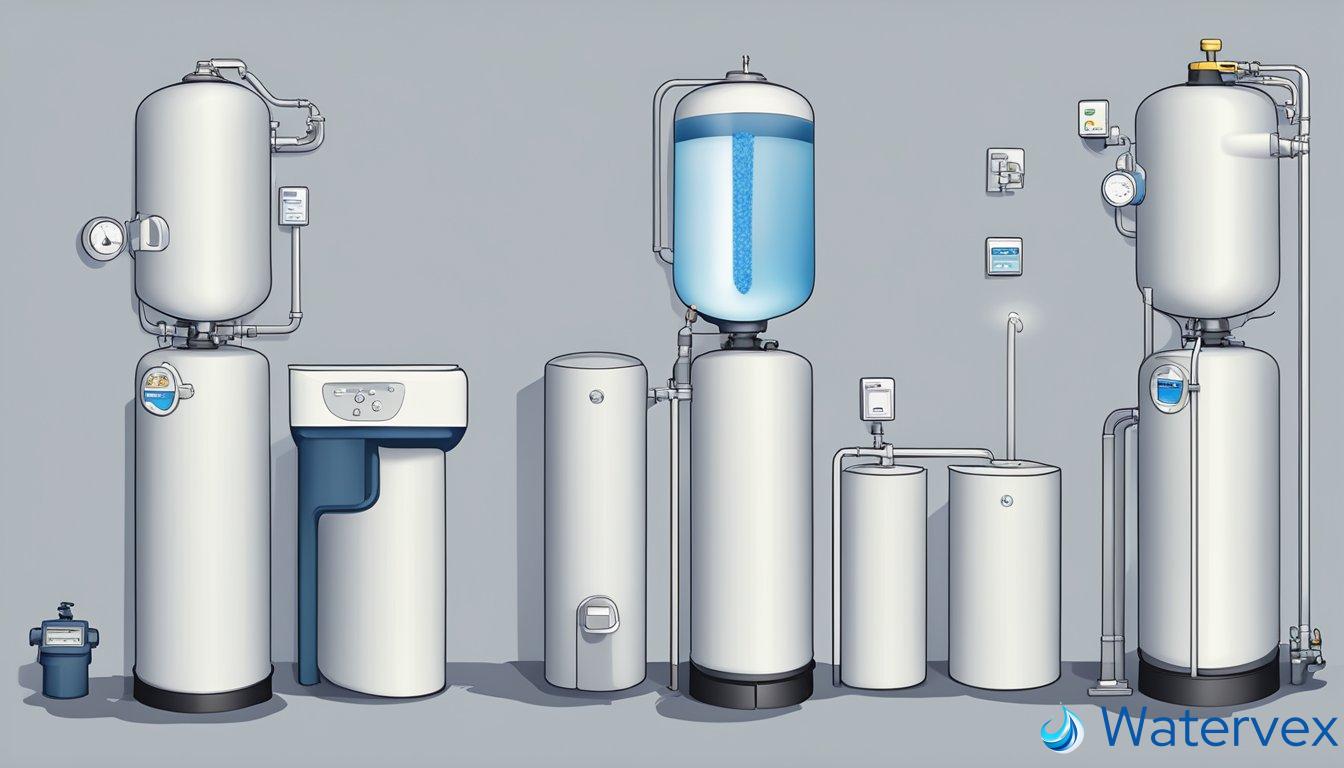Discovering a white, chalky residue on your faucets and dishes can be unsettling. This can often be traced back to your water softener. Water softeners are designed to reduce the hardness of water by replacing minerals like calcium and magnesium with sodium or potassium. However, when a water softener leaves behind salt residue, it’s an indication that something is amiss with the softening process.

Improper settings or malfunctioning components can lead to excessive sodium in the water, which then crystallizes as the water evaporates, leaving behind a residue. Maintenance is key to preventing this issue. A well-maintained water softener shouldn’t make your glasses look like they have a salt coating. It’s essential to not only choose the right type of salt for your unit but also to ensure correct installation and regular maintenance.
Key Takeaways
- Water softener residue is often due to excess sodium in the water.
- Regular maintenance of the unit can prevent salt buildup.
- Correct salt choice and softener settings are crucial for optimal performance.
Why Is My Water Softener Leaving Salt Residue?
Salt residue from your water softener often indicates a problem within the system’s operation or maintenance routine. Let’s explore the common causes and how to address them effectively for a residue-free water experience.
What Causes Salt Buildup in Water Softening Systems?
Hard Water and Ion Exchange:
The ion exchange process in your softener swaps calcium and magnesium ions for sodium ions. If the hardness level of your incoming water is set too high on the softener, it may cause an excess of sodium in the treated water, leading to salt residue.
Salt Bridges and Salt Mushing:
Over time, a crust, known as a salt bridge, can form in the brine tank, creating an empty space between the water and the salt, preventing proper regeneration. Similarly, salt mushing—the formation of thick sludge at the bottom of the brine tank—can reduce efficiency and affect water quality.
Improper Maintenance:
Inadequate or improper maintenance can cause issues like clogging of the venturi valve or brine line. Regular maintenance, including cleaning and replenishment of evaporated salt, is crucial.
Malfunctioning Control Valve:
The control valve governs the regeneration cycle. If malfunctioning, it might incorrectly regenerate too often, using more salt than necessary, which can leave salt residue.
How Can I Fix and Prevent Salt Residue From My Water Softener?
Regular Maintenance and Cleaning:
Ensure you perform regular maintenance, such as inspecting for salt bridges or mushing and breaking them apart. Clean the brine tank annually and check the salt levels frequently, adding fresh salt as needed.
Check Softener Settings:
Verify the softener settings are correct for your water’s hardness level. Adjust the settings to match your specific water quality, which may prevent excess salt during regeneration.
Inspect and Maintain Components:
Regularly inspect the resin bed, water line, and brine line for blockages or contaminants. Using a resin cleaner can keep the resin beads efficient for the ion exchange process. Consider resin replacement if your system is older.
Seek Professional Assistance:
If you’re uncertain or the problem persists, it’s wise to seek professional maintenance. A certified technician can troubleshoot and service your unit, ensuring it is in optimal condition.
Maintenance Tips for Water Softeners

Regular maintenance of your water softener is crucial to avoid the issue of salt residue that can accumulate on fixtures and faucets. Ensuring proper maintenance involves several straightforward but essential steps.
Firstly, monitor your salt levels frequently. This doesn’t just mean checking if there’s enough salt but also observing the type of salt used. Rock salt commonly leads to more insoluble build-up, so consider using higher purity salts. These produce fewer by-products, reducing the risk of salt clogging.
- Check salt levels monthly: This helps to prevent salt bridges and maintain soft water quality.
- Choose high-quality salt: Opt for evaporated salt pellets to decrease residue.
Cleaning the brine tank is another necessary part of water softener maintenance. Doing so annually will help prevent salt clogs and keep the system running efficiently. For cleaning your water softener, ensure it’s off and drained. Use suitable solutions, like a 3% bleach solution, for disinfecting the tank and resin bed.
- Clean the brine tank yearly: Helps in preventing residue and maintaining efficiency.
Inspecting your system for total dissolved solids (TDS) using a TDS meter can indicate when to service or adjust softener settings. If TDS levels are high, it might signal time to replace or regenerate the resin in your unit.
- Use a TDS meter: To determine if the system needs servicing or setting adjustments.
For homes with a reverse osmosis system, regular checks are vital to ensure the softener and RO system are working together correctly. Imbalanced settings can affect the RO system’s performance and the water softener effectiveness.
- Check interaction with reverse osmosis systems: To ensure both systems function well together.
Remember, your water softener is a key component in maintaining the quality of your water. By following these maintenance tips, you ensure your water softener performs optimally and continues to provide soft water without the issue of salt residues.
Choosing the Right Salt and Proper Installation

When selecting salt for your water softener system, it’s crucial to understand the different types available. Evaporated salt is known for its purity and is recommended if you’re experiencing white residue. It’s more soluble, which means fewer residues. Evaporated salt is excellent for maintaining water quality and is effective in the ion exchange process of softening water. Products like WaterFilterGuru.com’s recommended salt can prevent spotting issues.
On the other hand, some systems can use rock salt, which is less pure but might be suggested by some manufacturers. However, solar salt is another great option, striking a balance between purity and solubility, as highlighted by WaterDefense.org.
Here are key installation tips:
- Consult a professional: A certified plumber or installer can ensure your system is set up correctly.
- Brine tank care: Avoid salt mushing and bridging, which can impede salt dissolution and reduce efficiency, as noted by WorthWhileTech.com.
To avoid mishaps, follow these steps:
- Fill Level: Don’t overfill the brine tank with salt. Leave room for the brine to form.
- Break Up Salt Bridges: Use a broom handle to break any crust that forms on top of the salt pile.
- Check for Mushing: Stir the bottom of the tank occasionally to prevent salt from sticking and forming mush.
Installation pointers:
- Install according to the manufacturer’s guidelines.
- Ensure the brine tank is level and in an accessible location for maintenance.
By choosing a high-quality salt, like evaporated salt, and ensuring proper installation, you’ll reduce the chances of a salty taste or residue on dishes and fixtures after hand drying. Also, regular maintenance by a professional can help maintain the system’s performance over time.

